ข่าวล่าสุด
หมวดหมู่สินค้า
ร้อน สินค้า
-
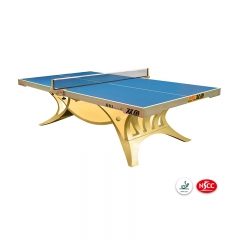
โต๊ะปิงปองพรีเมี่ยมสำหรับประชัน volant king
โต๊ะปิงปองระดับพรีเมียมรุ่นนี้เหมาะสำหรับการแข่งขันชิงแชมป์ อนุมัติโดย ittf และ nscc ไฟสีฟ้าช่วงล่างสีเงิน
อ่านเพิ่มเติม -
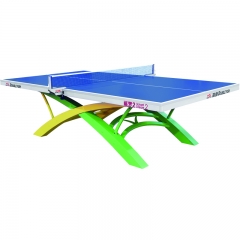
โต๊ะปิงปองอย่างเป็นทางการสำหรับการแข่งขัน Volant Dream 2
โต๊ะปิงปอง Volant Dream 2 อย่างเป็นทางการสำหรับการแข่งขันระดับนานาชาติที่ออกแบบโดยกีฬาปลาคู่
อ่านเพิ่มเติม -
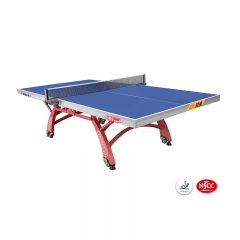
โต๊ะปิงปองอย่างเป็นทางการสำหรับการแข่งขัน xiangyun 328a
โต๊ะปิงปองแบบพกพา พับได้ พรีเมี่ยม ดีไซน์กะทัดรัด ระบบพับแบบใหม่ช่วยลดความเสี่ยงของการบาดเจ็บระหว่างการจัดเก็บและเคลื่อนย้ายโต๊ะ ittf อนุมัติโต๊ะปิงปอง
อ่านเพิ่มเติม -
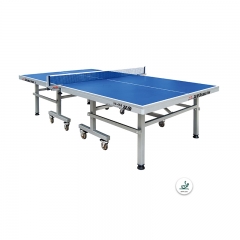
โต๊ะปิงปองอย่างเป็นทางการสำหรับเวิร์ลทัวร์ 99-45b
ittf อนุมัติโต๊ะปิงปองอย่างเป็นทางการสำหรับการแข่งขันระดับนานาชาติ ความหนาของโต๊ะ: 25mm คุณภาพการแข่งขัน – โต๊ะระดับมืออาชีพนี้ออกแบบมาสำหรับการแข่งขันในระดับสูงสุด สมบูรณ์แบบสำหรับครอบครัว – เสนอการเล่นระดับพรีเมียมสำหรับทุกเพศทุกวัย ไปแบบตัวต่อตัวหรือพับขึ้นเพื่อฝึกฝนเป็นรายบุคคล เหล็กหนา 2 นิ้วรองรับความท้าทายที่ยากที่สุด แกนกลางที่ยอดเยี่ยมสำหรับห้องเล่นเกม ถ้ำ หรือยิมของคุณ ประกอบง่าย – เริ่มเล่นในไม่กี่นาทีด้วยการประกอบอย่างง่าย ตาข่ายคุณภาพสูงมาพร้อมแคลมป์ล็อคที่ติดง่าย
อ่านเพิ่มเติม -
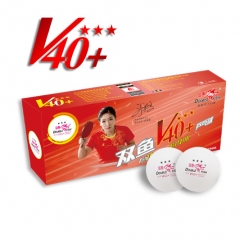
ปลาคู่คุณภาพดีที่สุด v40 volant ลูกปิงปอง 3 ดาว
ปลาคู่ v40 volant ลูกปิงปอง 3 ดาว เป็นไปตามมาตรฐานทางเทคนิค t3 ล่าสุดของ ittf ได้รับการอนุมัติจาก ittf และลูกอย่างเป็นทางการสำหรับทีมเทเบิลเทนนิสเวิลด์คัพ 2018 ที่ลอนดอน ตีกลับสูงขึ้น แกร่งขึ้น ,ปลอดภัยและทนทานกว่าเซลลูลอยด์แบบเดิมๆ ลูกบอลเย็บเอบีเอส
อ่านเพิ่มเติม -
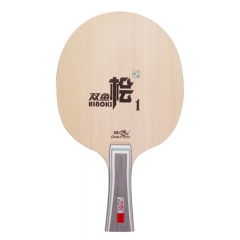
ปลาคู่ฮิโนกิ 1 ใบปิงปอง
|0|
อ่านเพิ่มเติม
ตรวจสอบย้อนกลับ丨ประวัติการพัฒนาของโรงงานอุปกรณ์กีฬา Dongfang กวางโจว
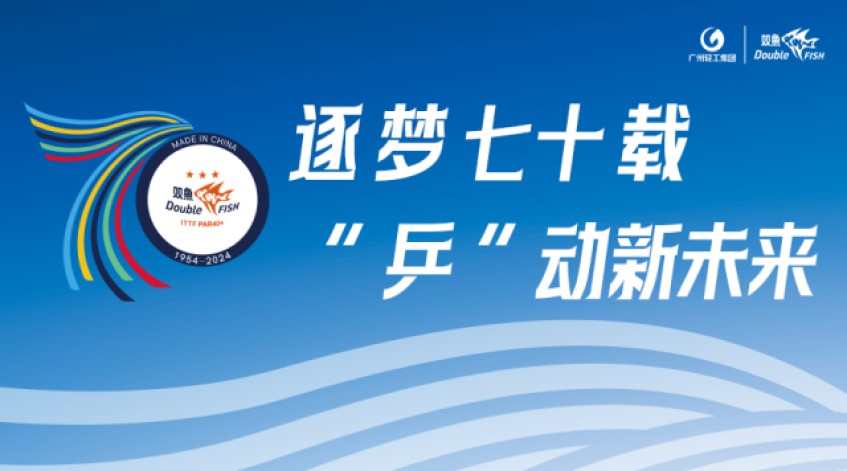
ในช่วงปลายศตวรรษที่ 19 ด้วยการนำศาสนาคริสต์เข้ามา กีฬาปิงปองก็เข้ามาที่กวางโจวเป็นครั้งแรกด้วยความช่วยเหลือจากโบสถ์ ในเวลานั้น โรงเรียนคริสตจักร เช่น True Light และ Peiying เป็นคนแรกที่แนะนำกีฬาประเภทนี้และรวมไว้ในกิจกรรมกีฬานอกหลักสูตร ในปีที่ห้าของสาธารณรัฐจีน (พ.ศ. 2459) ห้องปิงปองพิเศษได้ถูกสร้างขึ้นในโรงยิมที่สร้างขึ้นใหม่ของ Guangzhou YMCA ไม่เพียงแต่ให้นักเรียนได้ฝึกฝนเท่านั้น แต่ยังเปิดให้เยาวชนในสังคมได้จัดกิจกรรมฝึกซ้อมและแข่งขันอีกด้วย อิทธิพลของมันค่อยๆ แพร่กระจาย และโรงเรียนและกลุ่มสังคมบางแห่งก็ปฏิบัติตาม เทเบิลเทนนิสหยั่งรากและพัฒนาในกวางโจว และค่อย ๆ ก่อให้เกิดกระแสการเคลื่อนไหวทางสังคมที่แพร่หลาย2
ในปี 1952 New China ซึ่งต้องการการฟื้นฟูอย่างสิ้นหวัง ได้ก่อตั้งคณะกรรมการกีฬาแห่งชาติขึ้น โดยมีนายพล He Long ผู้ก่อตั้งเป็นผู้อำนวยการคนแรก ในปีเดียวกันนั้นเอง ได้มีการก่อตั้งทีมปิงปองแห่งชาติจีน และประธานเหมา เจ๋อตง ได้จารึกตัวอักษร 12 ตัวว่า "พัฒนากีฬาและเสริมสร้างร่างกายของประชาชน" สำหรับกิจการกีฬาของจีนใหม่ เป็นผลให้การเคลื่อนไหวฟื้นฟูกีฬาทั่วประเทศเริ่มต้นขึ้นในประเทศจีน

เนื้อหาของบทความนี้รวบรวมจาก "Guangzhou Municipal Chronicle" เล่ม 5, หน้า 306, "Historical Development of Oriental Sports Equipment Factory" และเนื้อหาจากปากเปล่าที่เขียนโดยวิศวกรเกษียณอายุ Zhang Xiting
②เรียบเรียงจากเล่มที่ 15 หน้า 84 ของ "Guangzhou Municipal Chronicle" นี่เป็นบันทึกที่เชื่อถือได้เร็วที่สุดในการแนะนำเทเบิลเทนนิสสู่ประเทศจีน
ในช่วงต้นของราชวงศ์ชิงตอนปลาย ธุรกิจส่วนตัวมากกว่า 10 แห่งที่ดำเนินธุรกิจและผลิตสินค้ากีฬาได้ถือกำเนิดขึ้นในบริเวณถนนเหวินหมิงและถนนเหวินเต๋อ ในเขตเยว่ซิ่ว กวางโจว ธุรกิจอิสระเหล่านี้มีขนาดการผลิตขนาดเล็กและส่วนใหญ่ผลิตห่วงบาสเก็ตบอล ไม้ขนาน และอุปกรณ์กีฬาที่ทำจากไม้อื่นๆ ในปี 1954 อุตสาหกรรมอุปกรณ์กีฬาของกว่างโจวได้เริ่มต้นเข้าสู่ยุคความร่วมมือ ครัวเรือนหัตถกรรมส่วนบุคคลได้จัดตั้งสหกรณ์การผลิตอุปกรณ์กีฬา 3 แห่ง มีสมาชิกทั้งหมด 109 คน หลังจากการปรับเปลี่ยน มีเพียง Yongjian Sports Equipment Co., Ltd. 3 (ต้นกำเนิดของบริษัท Doublefish ซึ่งต่อไปนี้จะเรียกว่า "Yongjian") ที่เลขที่ 185 ถนน Wenming เท่านั้นที่ยังคงอยู่ ด้วยสมาชิก 43 คน บริษัทนี้มีสถานที่ผลิตขนาดเล็กและอุปกรณ์รุ่นเก่า ต่อไป โดยยึดมั่นในจิตวิญญาณและอุดมคติของ "การต่อสู้ที่ยั่งยืน การเสริมสร้าง ความเข้มแข็งของประชาชน และการฟื้นฟูประเทศ" เราผลิตอุปกรณ์กีฬาที่ใช้สำหรับการสอนและการฝึกอบรมในโรงเรียน④
ในปี 1958 Yongjian ได้ปฏิบัติตามการเปลี่ยนแปลงของยุคสมัย และได้รับการปรับโครงสร้างใหม่ให้เป็นองค์กรที่เป็นของทุกคน และเปลี่ยนชื่อเป็น Yongjian Sports Equipment Factory อย่างไรก็ตาม ระบบการเป็นเจ้าของของประชาชนทั้งหมดไม่สามารถตอบสนองความต้องการการพัฒนาของหยงเจียนได้อย่างเต็มที่ หลังจากการฝึกฝนและการสำรวจเป็นเวลาสี่ปี Yongjian ตัดสินใจกลับไปสู่การเป็นเจ้าของร่วมกันในปี 1962 และคืนชื่อเดิมเป็น Yongjian Sports Equipment Co., Ltd.
ในปี 1966 เพื่อเปลี่ยนภาวะที่กลืนไม่เข้าคายไม่ออกของสถานที่การผลิตที่กระจัดกระจายและสภาพที่ล้าหลัง และเพื่อสนับสนุนการพัฒนาของสถาบันพลศึกษากวางโจวที่ดียิ่งขึ้น Yongjian จึงตัดสินใจย้ายฐานการผลิตไปยังบริเวณใกล้เคียงของสถาบันพลศึกษากวางโจวในเขตเทียนเหอ⑤ .
ในปี 1968 Yongjian ตอบรับคำเรียกร้องของรัฐบาลอย่างแข็งขัน และย้ายไปที่พื้นที่คลัสเตอร์อุตสาหกรรมของกวางโจวในเวลานั้น - Paolou Gang (ปัจจุบันคือ Yanzigang) บนถนน Industrial Avenue ในเขต Haizhu ได้ขยายโรงงานและเริ่มการผลิตทางอุตสาหกรรมขนาดใหญ่ และเปลี่ยนชื่อเป็น Guangzhou Sports Equipment Co., Ltd.
3.ในช่วงคริสต์ทศวรรษ 1950 และ 1960 วิสาหกิจร่วมกันบางแห่งในจีนมักตั้งชื่อตามคำว่า "社" ซึ่งพบได้ทั่วไปในพื้นที่ชนบทและองค์กรอุตสาหกรรมขนาดเล็กบางแห่ง
④ตามรายงานของ "Guangzhou City Chronicle" Yongjian ผลิตโต๊ะปิงปอง แพะ แท่งคู่ขนาน ที่วางลูกบอล กล่องกระโดด และเสื่อกระโดดสำหรับใช้ในโรงเรียนเป็นหลัก นอกจากนี้ ยังผลิตอุปกรณ์และเฟอร์นิเจอร์การฝึกทหาร โดยมีมูลค่าผลผลิตทางอุตสาหกรรมรวม 100,000 หยวน ในปี พ.ศ. 2500 ขนาดการผลิตค่อยๆ ขยายออกไป และจำนวนพันธุ์ก็เพิ่มขึ้นเป็น 50 พันธุ์
⑤ตามความทรงจำของวิศวกรเกษียณอายุ Zhang Xiting หลังจากที่ Yongjian ย้ายไปอยู่ใกล้กับสถาบันพลศึกษากว่างโจว โรงเรียนจะซ่อมอุปกรณ์กีฬาได้ง่ายขึ้น และนักเรียนของสถาบันจะใช้กีฬาประเภทต่างๆ ได้ง่ายขึ้นด้วย อุปกรณ์. นี่เป็นบันทึกแรกสุดของ "การผสมผสานระหว่างพลศึกษาและพลศึกษา" ในประวัติศาสตร์ของ Doublefish
ในเดือนธันวาคมของปีนี้ สโมสรอุปกรณ์กีฬากวางโจวได้รวมตัวกับสโมสรคริกเก็ตกวางโจว สโมสรไม้แบดมินตันหงเมียน และชมรมรูปภาพวิศวกรรมการก่อสร้าง⑥ เพื่อก่อตั้งโรงงานความร่วมมือสินค้ากีฬาตะวันออก ซึ่งถือเป็นการรวบรวมและประสานการพัฒนาของอุตสาหกรรมกีฬาแห่งใหม่ของกวางโจว กองกำลัง.
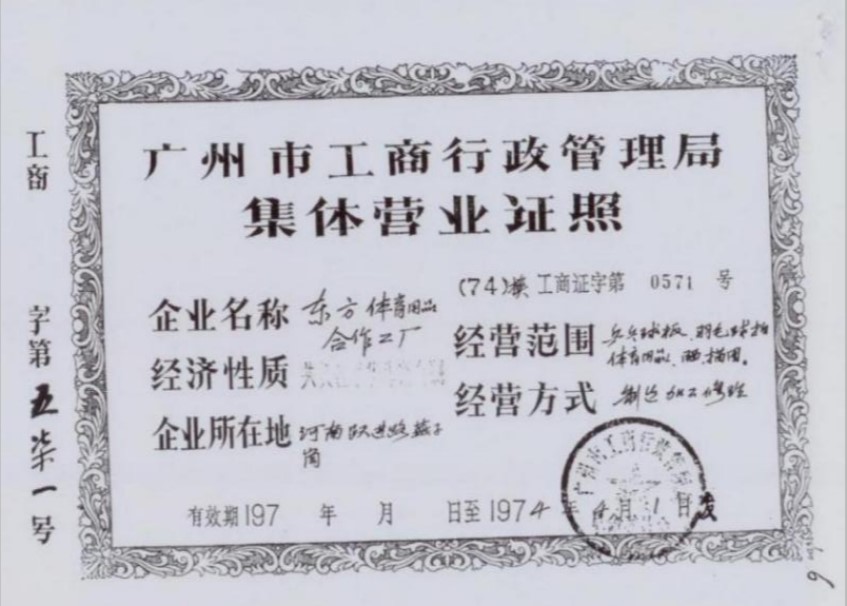
ใบอนุญาตประกอบธุรกิจโรงงานความร่วมมือสินค้ากีฬาตะวันออก
Guangzhou Sports Equipment Co., Ltd., which was incorporated into the cooperative factory in 1970, was renamed Oriental Sports Equipment Factory. In April 1975, the Oriental Sports Goods Cooperative Factory underwent a major organizational structure adjustment and was split into three independently operated entities: Guangzhou Oriental Sports Equipment Factory, Guangzhou Table Tennis Board Factory, and Guangzhou Badminton Racquet Factory.
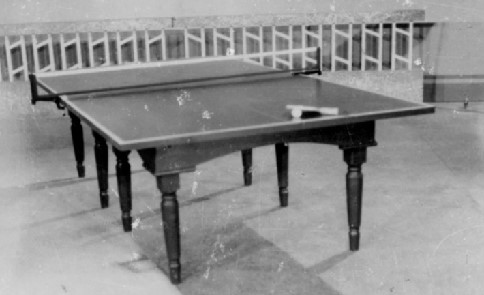
The vase-shaped table tennis table with wooden legs produced by Dongfang Sports Equipment Factory was a standard product of many schools’ physical education equipment from the 1960s to the 1980s
⑥The main business of Construction Engineering Drawing Agency is the drawing and copying of professional drawings.
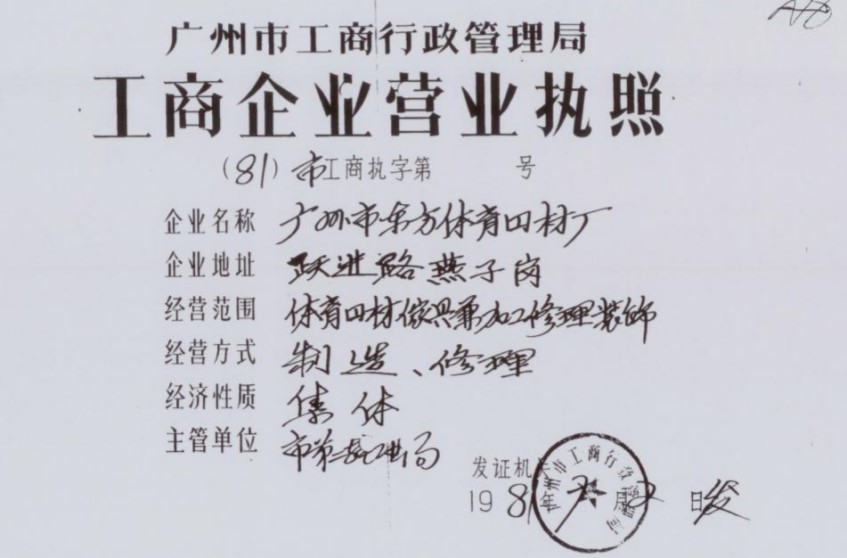
Business license of Guangzhou Dongfang Sports Equipment Factory after independent operation
After the Third Plenary Session of the Eleventh Central Committee of the Communist Party of China in 1978, China's national sports industry ushered in a new era of revival and development. Guangzhou Dongfang Sports Equipment Factory (hereinafter referred to as "Dongfang Factory") quickly seized the opportunity of reform and opening up, optimized the management system, reshaped the organizational structure, strengthened product technology and quality management, standardized material supply and production processes, and strictly controlled process safety. Comprehensively carry out enterprise reform.
Since 1987, with the support of relevant national, provincial and municipal departments, Dongfang Factory has invested 1.05 million yuan⑦ in technological transformation, purchased advanced mechanical equipment and testing instruments, set up automatic production lines for wood drying rooms and table spraying, and renovated workshops. Significantly improved production scale and capabilities. These measures have greatly improved product quality and market competitiveness, making Dongfang Factory a designated factory for the production of sports equipment by the Ministry of Light Industry and the National Sports Commission, and rated as a "provincial advanced enterprise", specializing in the production of various competitions, training, fitness and group products. There are more than 80 kinds of sports equipment used in the activities, registered with "Doublefish Brand", "Evergreen Brand" and "Eagle Brand", which has injected new vitality into the development of China's sports industry.
⑦Retired engineer Zhang Xiting recalled that at that time, the government provided an interest-free loan of 1.05 million yuan to support the development of Dongfang Factory to increase production capacity. The Dongfang Factory's annual sales revenue in 1987 was 2.6407 million yuan, so the investment was a huge one.
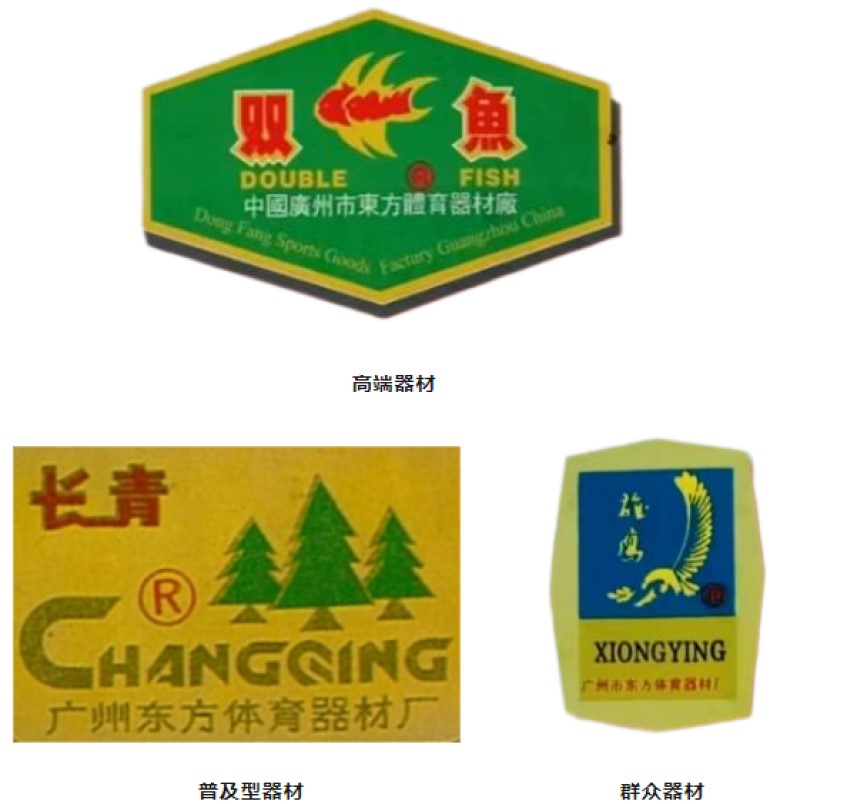
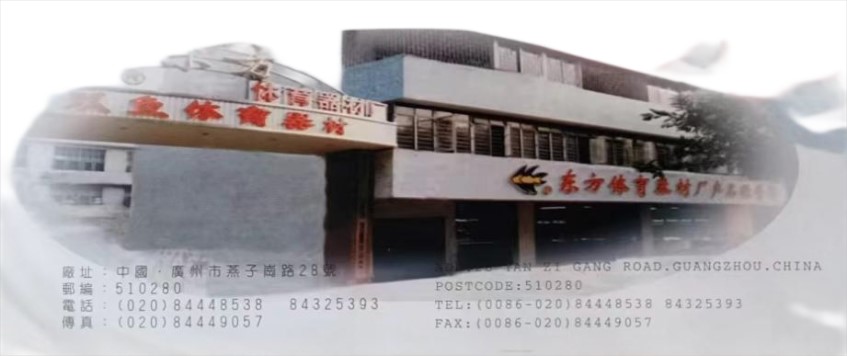
The site of Oriental Sports Equipment Factory in the 1990s
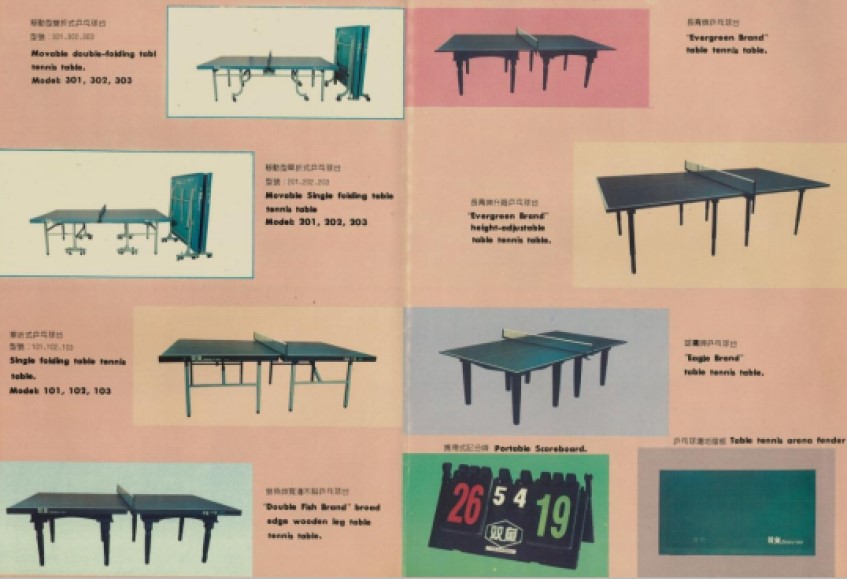
Table tennis equipment product catalog
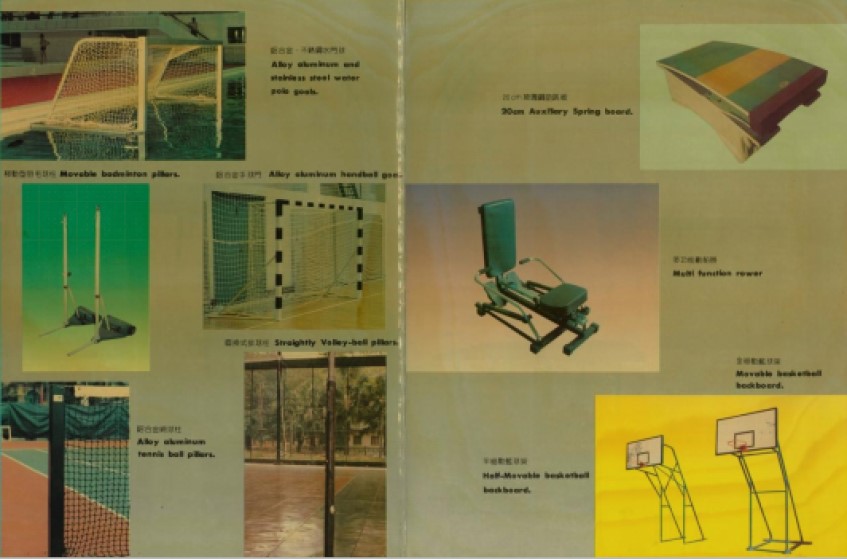
Ball equipment catalog
In 1987, as the Sixth National Games was about to be held in Guangdong Province, Dongfang Factory faced unprecedented technical challenges. With the strong support of superior departments, Dongfang Factory bravely took on the important task of developing and producing some key sports equipment for this sports event. This move greatly promoted the factory's technological innovation and productivity improvement. After nearly a year of unremitting efforts, Dongfang Factory successfully delivered 27 types of sports equipment for a total of 871 events, successfully completing the important tasks of the National Sports Commission and relevant provincial and municipal departments. The equipment provided includes folding table tennis tables, aluminum water polo goals and handball goals, etc., all of which have reached the advanced international standards of the 1980s.
The table tennis table, as the main product of the factory, has evolved from the original wooden leg design to iron legs through continuous technological iteration, and finally developed into an integrated folding third-generation product. Since the successful trial production of the "Doublefish PT2 Folding Table", it has won wide acclaim in various large-scale competitions at home and abroad.
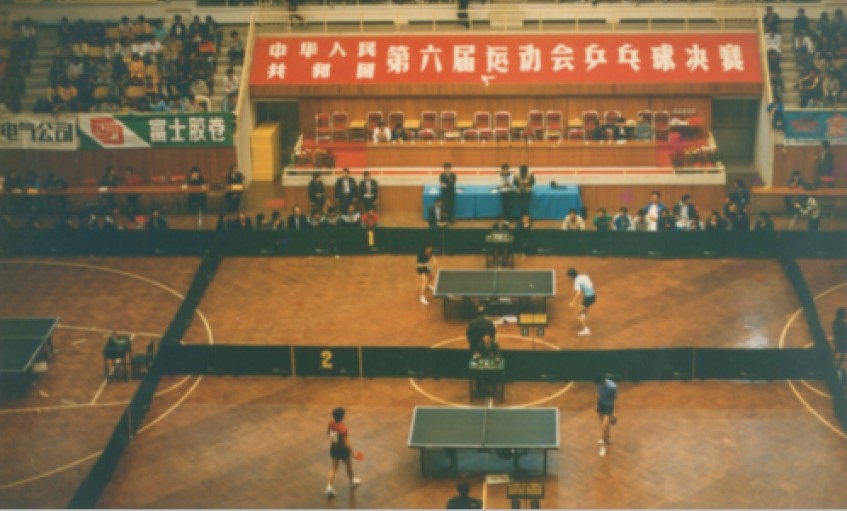
In 1987, the Sixth National Games was held in Guangdong. Doublefish table tennis equipment made its debut in the top domestic competitions for the first time, providing a full set of competition equipment including table tennis and tables for the event.
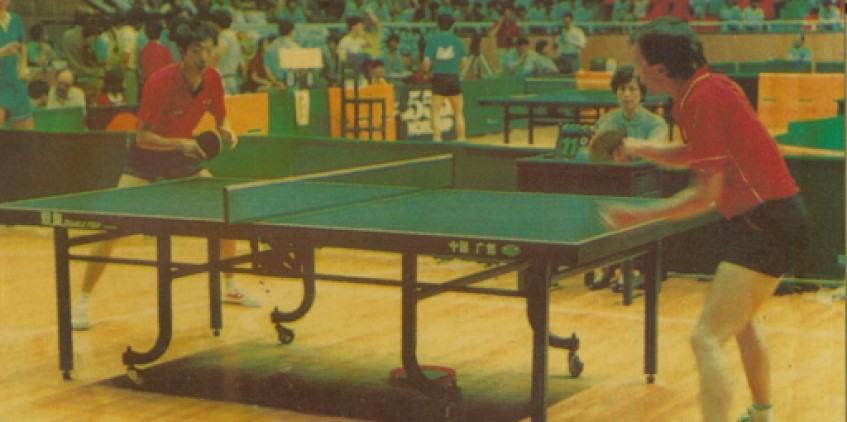
The Doublefish folding steel structure used in the 6th National Games to lower the table tennis table
At the end of 1988, the "Doublefish PT2" folding table was officially approved by the ITTF as a table for international competitions, realizing the long-cherished wish of generations of Dongfang Factory since its establishment. This not only won Dongfang Factory an international reputation, but also marked that the Doublefish table will officially enter the highest stage of international competitive sports.
On November 4, 1989, the National Sports Equipment and Sports Clothing Conference and the "Sports Contribution Award" award ceremony were jointly sponsored by the Ministry of Commerce, the Ministry of Light Industry, the Ministry of Textile Industry and the National Sports Commission. At this important meeting, Dongfang Factory won the "Sports Contribution Award" for its outstanding contribution to sports. This is not only an affirmation of Dongfang Factory’s long-term efforts and outstanding achievements, but also a significant recognition of its outstanding influence in the sports equipment industry.
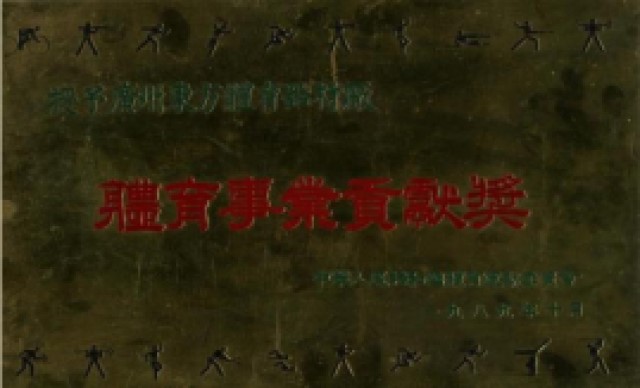
Sports Contribution Award Medal
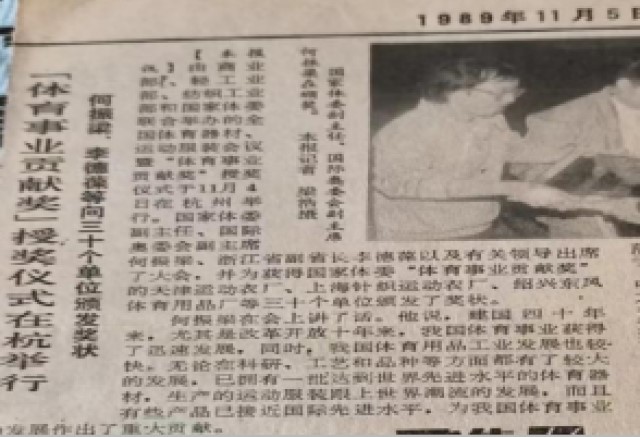
He Zhenliang รองผู้อำนวยการคณะกรรมการกีฬาแห่งชาติ และรองประธานคณะกรรมการโอลิมปิกสากล มอบเหรียญรางวัล Sports Contribution Award ให้กับตัวแทนของโรงงาน Dongfang
ในปี 1990 ประตูโปโลน้ำอลูมิเนียมอัลลอยด์ ประตูแฮนด์บอล และป้ายบอกคะแนนแบบพกพาที่ผลิตโดยโรงงานตงฟาง ถูกกำหนดให้เป็นอุปกรณ์การแข่งขันอย่างเป็นทางการของเอเชียนเกมส์ครั้งที่ 11 นับเป็นครั้งแรกที่อุปกรณ์กีฬาของ Dongfang Factory แสดงให้เห็นประสิทธิภาพที่โดดเด่นในการแข่งขันระดับนานาชาติ
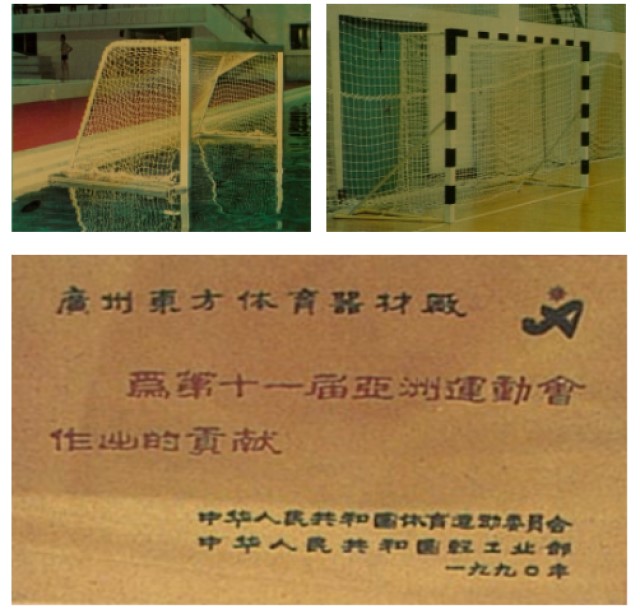
ตั้งแต่ปี 1991 ถึง 1995 ในช่วงการปฏิรูปเศรษฐกิจ โรงงาน Dongfang ได้ส่งเสริมนวัตกรรมผลิตภัณฑ์และการอัปเกรดอย่างแข็งขัน เพื่อเพิ่มขีดความสามารถในการแข่งขันขององค์กรและขยายส่วนแบ่งการตลาด หลังจากหลายปีของความพยายามอย่างไม่หยุดยั้ง โรงงาน Dongfang ประสบความสำเร็จในการอัพเกรดผลิตภัณฑ์โต๊ะปิงปอง โดยได้กำจัดโต๊ะวางเท้าไม้กระดานหลักกลูลัมที่มีวงจรการผลิตที่ยาวนานและกระบวนการที่ซับซ้อน⑧และเปิดตัวโต๊ะปิงปองที่มีท็อปโต๊ะ MDF และ ขาตั้งกล้องโลหะทั้งหมด การรวมกันของโต๊ะปิงปองหลายตัว นวัตกรรมทางเทคโนโลยีนี้ได้ปรับปรุงประสิทธิภาพการผลิตของผลิตภัณฑ์อย่างมีนัยสำคัญ และสร้างความก้าวหน้าที่ก้าวหน้าในด้านคุณภาพและผลผลิตของโต๊ะปิงปอง การผลิตโต๊ะปิงปองจึงเข้าสู่ยุคใหม่
⑧ตาม "Guangzhou City Chronicle" โรงงาน Dongfang ได้เปิดตัวโต๊ะปิงปองแบบติดกาวรุ่นที่สองในปี 1973 แทนที่โต๊ะแบบกระเบื้องดั้งเดิม
ในปี 1995 การแข่งขันปิงปองโลกครั้งที่ 43 จัดขึ้นที่เทียนจิน "โต๊ะ Doublefish" ที่พัฒนาและผลิตโดยโรงงาน Dongfang อย่างอิสระ กลายเป็นอุปกรณ์อย่างเป็นทางการของการแข่งขันระดับนานาชาติชั้นนำเป็นครั้งแรก โดยเป็นสักขีพยานในช่วงเวลาประวัติศาสตร์ที่ทีมปิงปองของจีนกลับมาสู่จุดสูงสุดอีกครั้ง
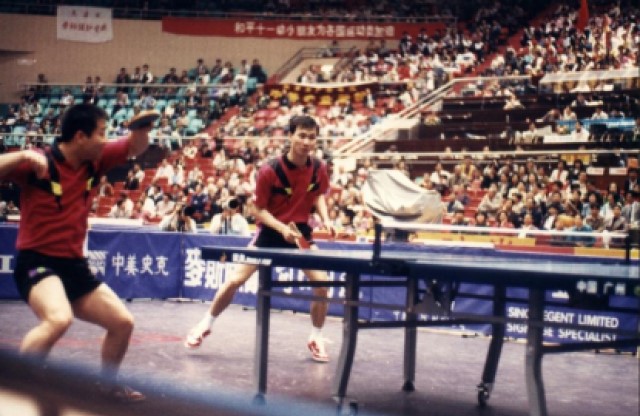















 Overseas business:(020)8431 9554
Overseas business:(020)8431 9554
 13829778212
13829778212